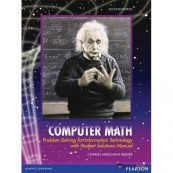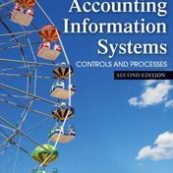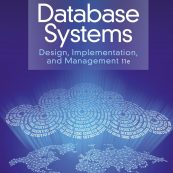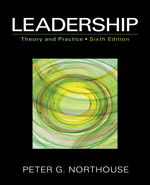Concepts in Federal Taxation 2014 Murphy 21st Edition Solutions Manual
$38.00
Name: Concepts in Federal Taxation 2014
Author: Murphy Higgins
Edition: 21st
ISBN-10: 128518050X
- Description
- Reviews (0)
Description
You will receive this product immediate after placing the order
Concepts in Federal Taxation 2014
Concepts in Federal Taxation 2014 Murphy Higgins
Concepts in Federal Taxation 2014 Murphy Higgins 21st
Concepts in Federal Taxation 2014 Murphy Higgins 21st Solutions Manual
Concepts in Federal Taxation 2014 Murphy 21st Edition Solutions Manual
***THIS IS NOT THE ACTUAL BOOK. YOU ARE BUYING the Solutions Manual in e-version of the following book***
Name: Concepts in Federal Taxation 2014
Author: Murphy Higgins
Edition: 21st
ISBN-10: 128518050X
Type: Solutions Manual
– The file is either in pdf, doc, rtf or zipped in the package and can easily be read on PCs and Macs.
– Delivery is INSTANT. You can download the files IMMEDIATELY once payment is done.
If you have any questions, please feel free to contact us. Our response is the fastest. All questions will always be answered in 6 hours., most of the time within 30mins
We also faced similar difficulities when we were students, and we understand how you feel.
But now, with the Concepts in Federal Taxation 2014 21st Solutions Manual, you will be able to
* Anticipate the type of the questions that will appear in your exam.
* Reduces the hassle and stress of your student life.
* Improve your studying and also get a better grade!
* Get prepared for examination questions.
* Can save you time and help you understand the material.
This is the quality of service we are providing and we hope to be your helper.
Delivery is in the next moment. Solutions Manual is accurate.
Prepare to receive your Concepts in Federal Taxation 2014 21st Solutions Manual in the next moment.
ISBN-10: 128518050X
If you have any questions, or would like a receive a sample chapter before your purchase, please contact us at inquiry@testbanksafe.com
Concepts in Federal Taxation 2014
Concepts in Federal Taxation 2014 Murphy Higgins
Concepts in Federal Taxation 2014 Murphy Higgins 21st
Concepts in Federal Taxation 2014 Murphy Higgins 21st Solutions Manual
Concepts in Federal Taxation 2014 Murphy 21st Edition Solutions Manual
CHAPTER 2
INCOME TAX CONCEPTS
___________________________________________________________________
DISCUSSION QUESTIONS
1. This chapter compared the operation of the income tax system with the operation of other systems we have devised to govern our everyday lives. Choose an example of a system you deal with in your everyday life, and explain part of its operation in terms of concepts, constructs, and exceptions to the general concepts and constructs.
There are several possibilities for student response to this problem. The key point is that they identify a system, a concept underlying the system with a related construct, and an exception to the concept. For example, the University Library operates under the general concept that everyone should have access to the materials in the library. A construct related to this concept is that some materials may be checked out for a period of time (two weeks for example), while other types of materials may not be checked out at all (the exception to the construct). Another exception to the check-out rules may be made for faculty: faculty may have longer check-out periods and may be able to check out materials that other users cannot.
2. The chapter stated that the ability-to-pay concept is fundamental to the operation of the income tax system. What is the ability-to-pay concept, and what two basic aspects of the income tax system are derived from the concept? What might the tax system be like without this concept?
The ability-to-pay concept states that the tax paid should be related to the amount that the taxpayer has to pay the tax. This concept is implemented by using taxable income (income net of deductions) as the tax base for figuring the tax. This gives recognition to differing levels of income as well as differing levels of deductions by each taxpayer. The second aspect is the use of progressive tax rates in the calculation of the tax. This rate structure imposes lower tax rates on lower income levels while taxing higher levels of income at higher rates.
Without this concept, the income tax could be very different. First, a different tax base could be used, such as a tax on all income received. In addition, the tax rate structure might not be progressive. For example, a tax on all income received might be subject to a single tax rate (proportional tax structure).
3. What is an arm’s-length transaction? What is its significance to income taxation?
An arm’s-length transaction is one in which the parties to the transaction bargain in good faith for their individual benefit, not for the mutual benefit of the group. That is, the price of the transaction is a fair market value.
The importance for income taxation is that transactions not made at arm’s-length are usually not given their intended tax effect. This has led to the related party rules which define situations in which entities do not bargain at arm’s-length. Special rules for transactions between related parties have been developed to discourage such transactions.
4. Explain how the related party construct and the arm’s-length transaction concept interact.
Related parties are defined as certain relatives (children, parents, grandparents) and other relationships in which one party controls the action of the other party (e.g., greater than 50% ownership of a corporation). In such cases, there is an incentive to cooperate to structure transactions that have favorable tax effects for the transaction group (i.e., related parties may enter into transactions that they would not otherwise enter into with an unrelated party). Because of this potential for structuring transactions that could lead to abuse, related parties are deemed not to transact at arm’s-length.
5. Why is the pay-as-you-go concept important to the successful operation of the income tax system? What other types of taxes are based on this concept?
Because the U.S. income tax system is based on voluntary compliance, it is important that the system have features that encourage compliance. By having amounts withheld from a taxpayer’s income as it is earned and requiring a taxpayer not subject to withholding to make estimated tax payments, the system encourages taxpayers to file returns. That is, without such a requirement, taxpayers would face very large tax payments when filing their annual returns. Many taxpayers could not afford to make such a large lump-sum payment, leading to an incentive either to not file, or to greatly understate their income. The pay-as-you-go system leaves taxpayers with either a relatively small amount of tax due or a refund of a portion of their prepaid taxes. This encourages taxpayers to file their returns and report the correct amount of income.
The most familiar type of tax that is based on the same concept is the sales tax. State income taxes and Social Security/Self-Employment taxes are also subject to withholding and estimated payment requirements. In addition, other types of user taxes are typically collected at point of sale. This would include gasoline taxes, taxes on luxury autos, and utility taxes.
6. What is the difference between a taxable entity and a conduit entity?
A taxable entity is an entity that must pay tax on its income. The two primary taxable entities are individuals and corporations. The owners of a corporation do not pay the income tax on the corporation’s taxable income. However, the owner’s are taxed when the corporation distributes income, in the form of dividends, to the owners.
A conduit entity is a tax reporting entity that reports its results to the government, but does not pay tax on its income. Rather, the conduit entity’s income flows through to its owners, who report their share of the conduit entity income on their returns. Thus, the owners of the conduit entity pay the tax on the conduit’s income, not the conduit entity.
7. Why is the tax benefit rule necessary? That is, which concept drives the need for this construct? Explain.
The tax benefit rule is necessary because of the annual accounting period concept requirement that the events of each tax year are to stand alone. Because prior year’s returns are generally not subject to adjustment under this concept, there is a need for a construct to determine the proper treatment of items previously deducted that are recovered in a subsequent year.
8. What are the two basic methods of accounting that may be used by taxpayers? How do the two basic methods differ?
The two basic accounting methods that are acceptable for tax purposes are the cash method and the accrual method. The basic difference between the two methods is the criteria used to determine the timing of the recognition of income and expenses.
The cash method recognizes income when cash or its equivalent is received. Expenses are deducted when they are paid. That is, it is basically a cash flow system (although capital expenditures cannot be deducted in total in the period in which they are paid).
The accrual method recognizes income when it is earned (the receipt of cash or its equivalent is not a factor). Expenses are deducted when all events have occurred that fix the liability for the payment and the amount of the payment can be reasonably estimated. The payment of the expense is not a factor for accrual basis taxpayers.
9. What is the effect of the capital recovery concept on income recognition?
The capital recovery concept states that no income is recognized until all capital invested in an asset has been recovered. Thus, when assets are sold, no income results unless the sales price is greater than the capital invested in the asset. If the sales price is less than the amount of capital invested, then the taxpayer has sustained a loss. The amount of the loss is equal to the capital that was not recovered through the disposition of the asset.
10. Chapter 1 discussed how gross income is equal to all income received, less exclusions. Which concepts form the basis for this calculation of gross income? Explain.
The all-inclusive income concept provides that all income received is taxable. The legislative grace concept allows Congress to provide relief from taxes through exclusions and deductions. Thus, the calculation of gross income is a combination of the two concepts.
11. What is capital gain income? How is it different from ordinary income?
Capital gain income (loss) results from the sale or other disposition of a capital asset. For individuals, capital assets consist of stocks, bonds, other investment assets, and personal use property.
Net long-term capital gains of individuals are given special treatment – the tax rate on a net long-term capital gain is 15%. Net capital loss deductions are limited to $3,000 per year for individuals. Corporations are only allowed to deduct capital losses against capital gains.
12. Why does the doctrine of constructive receipt apply only to cash basis taxpayers?
The constructive receipt doctrine is used to determine when a taxpayer has received income. This is critical for the cash basis taxpayer who recognizes income when it is received.
An accrual basis taxpayer recognizes income when the income has been earned. Recognition is not contingent upon receipt of the income. Therefore, the constructive receipt doctrine does not affect income recognition by accrual basis taxpayers.
13. How is the wherewithal-to-pay concept different from the ability-to-pay concept?
The ability-to-pay concept is a general concept that states that each taxpayer should pay a taxed based on his or her ability to be able to pay the tax. That is, those taxpayers with the most income should pay relatively more tax. This concept leads to such things as progressive rate schedules, exemption deductions, etc., that are system-wide applications.
The wherewithal-to-pay concept is an income recognition concept. It states that the tax on an income item should be levied in the period in which the taxpayer has the means to pay the tax. It overrides accounting methods and other concepts (realization) and requires recognition of income items in the period that the taxpayer has resources from the transaction to pay the tax. Thus, the concept is applied to specific transactions and is not a system-wide application.
14. Explain how the business purpose concept provides the basis for determining which expenses are deductible.
To deduct an expenditure, the business purpose concept requires that the expenditure have a business or economic purpose that exceeds any tax avoidance motive. A business or economic purpose is one that involves a profit-seeking activity. The tax law embodies this concept by allowing the deduction of trade or business expenses and production of income expenses (i.e., investment expenses), both of which involve profit-seeking activities. Personal expenditures (except those specifically allowed as itemized deductions) and expenditures that are primarily motivated by tax avoidance are not deductible.
15. What is a capital expenditure?
A capital expenditure is any expenditure that benefits more than one annual accounting period. That is, the usefulness of the expenditure extends substantially beyond the end of the tax year in which the expenditure is made. Because of the multi-period benefit, capital expenditures generally are not deductible in full in the period they are paid or incurred. Rather, they must be capitalized as an asset and allocated to the periods of benefit. Common capital expenditures include fixed asset purchases (e.g., land, buildings, equipment), prepaid expenses, and purchases of securities.
16. The legislative grace concept is both an income concept and a deduction concept. Explain how the application of the concept differs for income items and deduction items.
The legislative grace concept states that any tax relief provided is the result of a specific act of Congress that must be strictly applied and interpreted. Exclusions from income and deduction allowances are both forms of tax relief and therefore, result from the legislative grace concept.
The difference in the application of the concept to income and deduction items is the approach taken in analyzing what is included in income and what is deductible. The all-inclusive income concept states that all income received (earned) is taxable absent some specific provision in the tax law exempting it from tax. Thus, the approach to income is to assume that everything is taxable and to look for those provisions that exclude income from tax (i.e., where legislative grace has provided tax relief).
Deductions are just the opposite. The business purpose concept states that an expenditure must have a profit motive in order to be deductible. Therefore, when approaching deductions, the assumption is that items are not deductible and specific provisions must be found that allow the deduction (i.e., where legislative grace has provided tax relief).
17. The capital recovery concept is both an income concept and a deduction concept. Explain how the application of the concept differs for income items and deduction items.
The capital recovery concept states that there is no income until all capital invested has been recovered. The income side of the concept allows the recovery of capital investment against the selling price of assets in determining the amount of income (loss) from the disposition of assets.
The deduction side of the concept is a limit on the amount of the deduction. Because income results from an excess of income over expenses, the maximum amount of any deduction is the amount of capital invested in the deduction. Therefore, expenses are deducted at their cost to the taxpayer, not at some other value (e.g., replacement cost, current market value).
Be the first to review “Concepts in Federal Taxation 2014 Murphy 21st Edition Solutions Manual”
You must be logged in to post a review.














Reviews
There are no reviews yet.